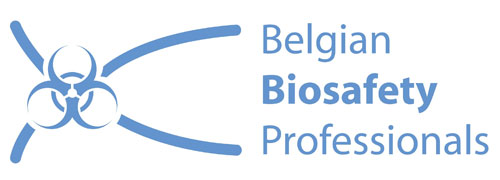BBP topic contacts
BBP topic contacts
Topic |
Contact Person |
Risk AssessmentRisk assessment is the basis for a dynamic risk management program. Yet, in contrast to other safety areas, biosafety faces specific difficulties when performing risk assessments. The diversity of biological material, the differences in intended activities, the lack of quantitative risk information, are just a few. In addition, many biosafety officers have hardly received training on risk assessment procedures and rely on scattered information. A BBP task force on Risk Assessment initiated exchanges to support the BBP members with best practices. The activity became less pressing when the SBB published information on risk assessment. Also an initiative with SANDIA, testing their biosafety web-modules, was concluded. Hence, the task force has ceased its’ activities. Any suggestion for Risk Assessment related topics to be taken up by BBP can be directed to the Risk Assessment Contact Person. Form Biological Hazard Level Classification (2007 Modification Input Sheet) |
Patrick Rüdelsheim |
RegulationsThe task force on regulatory affairs pro-actively follows up on all regulatory developments in the area of biosafety relevant for the biosafety officer. Until the current moment the task force has worked on the following issues:
The TF activity on the latter subject has included the organisation of two quarterly workshops and has led to a Position Paper that can be found in the Members Only section. Any suggestions for topics to be taken up by the task force should be directed to the task force leader . |
René Custers |
Biosafety ProfessionThe BSO provides information and advice on biological safety to laboratory staff as well as to other persons employed at locations in which genetically modified or pathogenic organisms are in use, making sure they are aware of the risks and responsibilities involved. The duties of the BSO also extend to the following. Issuing instructions to new employees and organising the training of the staff involved with the contained use:
In order to clarify the situation of the BSO, the scope of this Task Force is to
For any additional information on the activities of this task force, please feel free to contact its leader. |
Toon de Kesel |
Alkaline HydrolysisAlkaline hydrolysis has become of increasing interest as an alternative inactivation method for (microbiologically) contaminated organic waste. Its effectiveness, relative ease to use, low impact on the environment and relative low operational costs make it the method of choice compared to the classical inactivation techniques such as autoclaving, incineration or rendering. Despite its proven effectiveness in terms of inactivation, the implementation of alkaline hydrolysis is however hindered because of overlapping legislation that pursue different objectives and apply different standards. The BBP ad hoc working group on alkaline hydrolysis has explored if and how this conflict in regulations can be overcome. Therefore, they have strived to perform a detailed study of existing European and national legislation, to discuss with users of the technique throughout Europe as well as with manufacturers’, and to communicate with regulatory bodies. In 2014, the working group wrote a position paper that was distributed to interested parties, including the ‘Commission Animal Byproducts (CoABP)’ of the FAVV-AFSCA. The paper can also be consulted at the BBP website, on the Output page. For potential users in a Belgian contect, solutions have been identified. Nevertheless, BBP is following-up on the subject of alkaline hydrolysis, through participation in the EBSA Animal By-products project Team. For more information, contact the Alkaline Hydrolysis Contact Person. |
Karen van der Meulen |
